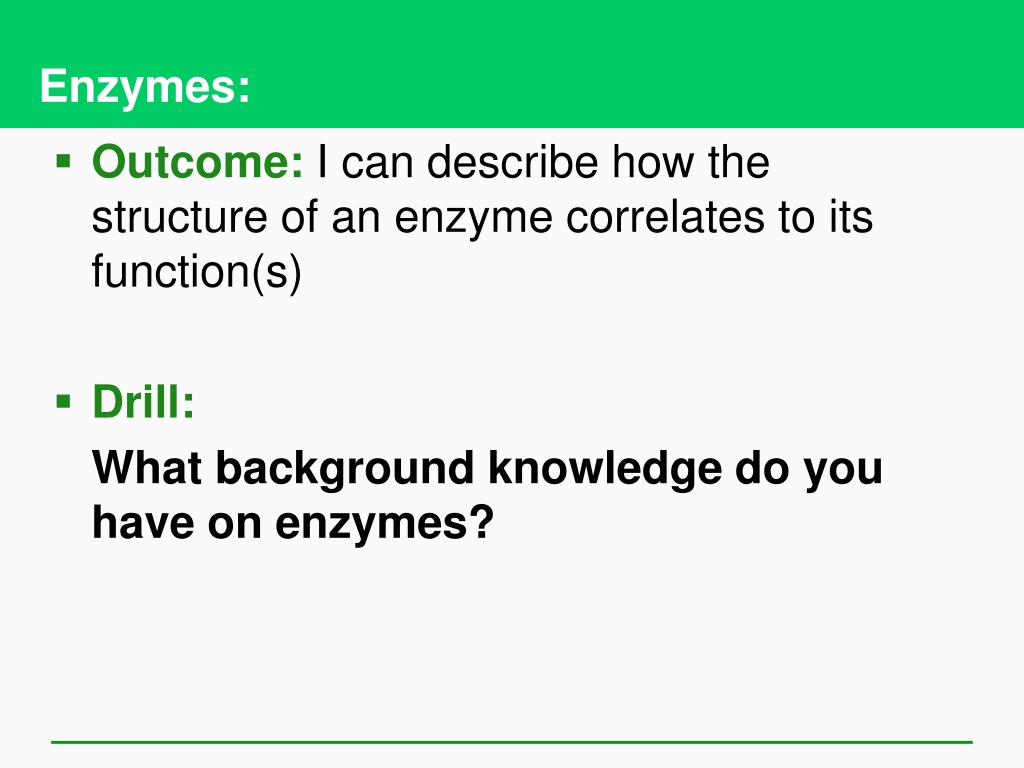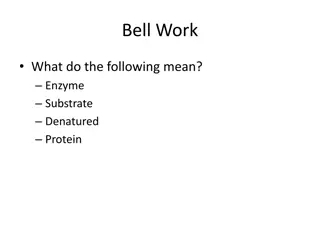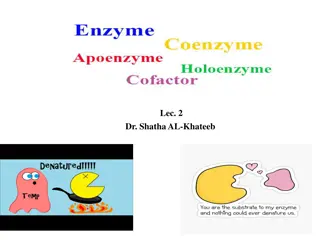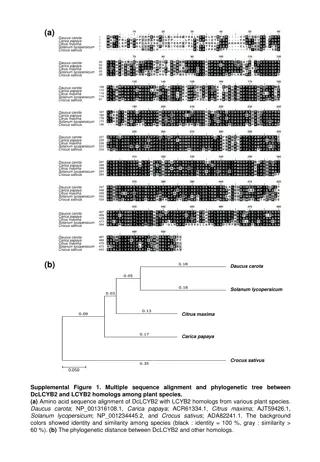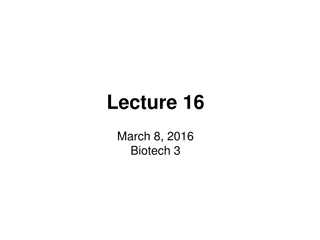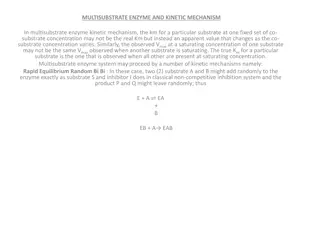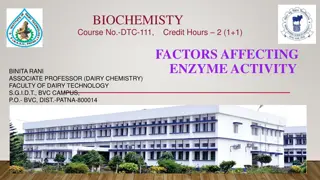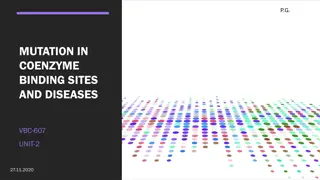Understanding Enzyme Structure and Function
Enzymes are protein catalysts that accelerate chemical reactions by lowering activation energy. They exhibit substrate specificity and bind to substrates at their active sites. Enzymes may require cofactors for optimal function and can be regulated by various molecules affecting their activity.
Download Presentation

Please find below an Image/Link to download the presentation.
The content on the website is provided AS IS for your information and personal use only. It may not be sold, licensed, or shared on other websites without obtaining consent from the author. Download presentation by click this link. If you encounter any issues during the download, it is possible that the publisher has removed the file from their server.
E N D
Presentation Transcript
Enzymes: Outcome: I can describe how the structure of an enzyme correlates to its function(s) Drill: What background knowledge do you have on enzymes?
Enzyme Structure and Function Enzymes are protein catalysts They speed up the rate at which reactions occur Lower the activation energy by creating a microenvironment that is energetically more favorable for a reaction
Features of Enzymatic Reactions 1. Enzymes do not make anything happen that could not happen on its own they just make it happen much faster. Reactions do not destroy or use up enzyme molecules. Each type of enzyme recognizes and binds to only certain substrates. - substrate specificity 2. 3.
Enzyme-catalyzed Reactions Reactants in an enzyme-catalyzed reaction known as substrates. They bind to the enzyme
Enzyme-catalyzed Reactions Substrates bind to the enzyme's active site interactions between the enzyme and the substrate stabilize the transition state decrease the activation energy.
Active Site Pocket or crevice Site where substrates are bound Site of reaction catalysis Only substrates of specific size, shape, solubility, and charge can bind Basis of enzyme specificity
Do Enzymes Act Alone? Some enzymes require cofactors to function normally. -these are either metal ions or small organic molecules called coenzymes. The cofactors usually are in the active site and are involved in transition state stabilization.
Regulation of Enzyme Action Enzyme activity can be regulated by molecules which are not part of the enzyme Competitive inhibition: molecule similar in size and shape to substrate binds to active site. competes with substrate for active site
Allosteric Regulation Allosteric regulation either increases or decreases enzyme activity depending on the way in which enzyme shape changes
Allosteric Activation allosteric activator enzyme active site active site cannot bind substrate vacant allosteric binding site active site altered, can bind substrate
Allosteric Inhibition allosteric inhibitor allosteric binding site vacant; active site can bind substrate active site altered, can t bind substrate
Regulation of Enzyme Action Allosteric inhibition: regulatory molecule binds at site other than active site (allosteric = different structure) binding changes shape of active site
Feedback Inhibition Feedback inhibition of enzyme activity occurs in pathways which require multiple enzyme-catalyzed steps The end product of the pathway inhibits the first enzyme in the pathway when there is an abundance of product the pathway is shut down enzyme 3 enzyme 2 enzyme 4 enzyme 5 A cellular change, caused by a specific activity, shuts down the activity that brought it about enzyme 1 END PRODUCT (tryptophan) SUBSTRATE
Enzymes: Exit Ticket: What is the difference between competitive inhibition and allosteric inhibition?
